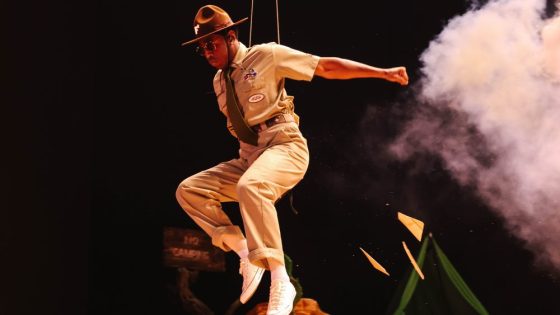The 111th edition of the Tour de France gets under way in Florence, Italy on Saturday, 29 June with the three-week race ending in Nice on Sunday, 21 July.
The riders will tackle seven mountain stages including trips to the Pyrenees and Alps during the 3,492km (2,170-mile) race.
There will also be two individual time trials, with La Grande Boucle concluding with a race against the clock for the first time since 1989 – when Greg LeMond famously pipped Laurent Fignon to the yellow jersey by eight seconds.
BBC Sport looks at each stage of the gruelling 21-stage event, analysing where it could be won and lost.
This page will be updated throughout the Tour with the winner and a brief report following each stage.
Saturday, 29 June – stage one: Florence – Rimini, 206km
The Grand Depart takes place in Italy for the first time as Florence plays host to the Tour.
The lumpy route travels east to Rimini on the Adriatic coast and is one of the toughest opening stages in recent memory with seven categorised ascents and 3,600m of climbing on the menu before what could be a fast final 25km to the line.
Sunday, 30 June – stage two: Cesenatico – Bologna, 199.2km
Stage two carries the race across the rolling hills of the Emilia-Romagna region of northern Italy to Bologna, via Imola’s famous motor racing circuit, and over the roads that saw Julian Alaphilippe win the World Championships in 2020.
Two climbs up to the sanctuary of San Luca – 1.9km at a 10.6% gradient – in the finale should provide a perfect launchpad for the puncheurs in the peloton to seek stage glory.
Monday, 1 July – stage three: Plaisance – Turin, 230.8km
Three category four climbs do little to alter this from being a guaranteed stage for the sprinters and a first opportunity for Mark Cavendish to claim record 35th stage win.
Tuesday, 2 July – stage four: Pinerolo – Valloire, 139.6km
A taxing day in the saddle sees the race shift from Italy into France and head 2,000m above sea level with a passage through Sestrieres.
A long, sloping ascent straight up a mountain from the roll-out will hardly be relished by the sprinters – but will be welcomed by those aiming to form the breakaway.
A lengthy descent should provide some respite before the climb up the Col de Montgenevre and the mighty Col du Galibier, where there will be an opportunity for the general classification (GC) riders to lay down an early marker.
Wednesday, 3 July – stage five: Saint-Jean-de-Maurienne – Saint-Vulbas, 177.4km
After an arduous day in the Alps, the GC teams will be content to allow the sprint teams to take control.
Two relatively modest climbs offer little encouragement to any would-be escapees and promise a high-speed finish.
Thursday, 4 July – stage six: Macon – Dijon, 163.5km
For a second day on the trot the sprinters will have something to get excited about.
The flat route that winds through the vineyards of Burgundy should again discourage a breakaway and culminates in an 800m dash to the finishing line.
Friday, 5 July – stage seven: Nuits-Saint-Georges – Gevrey-Chambertin, 25.3km
The first of two individual time trials arrives a third of the way into the race.
With both Nuits-Saint-Georges and Gevrey-Chambertin famed for their wine-making, expect wonderful views as the GC action heats up on a short route that seems ideally suited to Remco Evenepoel.
Saturday, 6 July – stage eight: Semur-en-Auxois – Colombey-les-Deux-Eglises, 183.4km
While this stage contains several short and punchy climbs, none are lengthy or hard enough to affect the GC race.
However, if a strong enough breakaway group gets up the road they may be capable of depriving the sprinters of a victory.
Sunday, 7 July – stage nine: Troyes – Troyes, 199km
With 14 gravel sections totalling 32km heading in and out of Troyes, this is likely to be a tense and exciting stage with fights for position before each white section of road.
With punctures, mechanical issues and falls all likely to come into play, splits could well occur between the GC contenders – particularly if the elements turn nasty.
Tuesday, 9 July – stage 10: Orleans to Saint-Amand-Montrond, 187.3km
Unusually there is not a single categorised climb on this parcours, however Saint-Amand-Montrond’s exposed roads are notorious for their echelon-marked finales.
If the wind picks up we could be in for an exciting 30km run into the finish line comparable to 2013, when the crosswinds helped scatter the peloton and GC contenders before Cavendish claimed victory.
Wednesday, 10 July – stage 11: Evaux-les-Bains to Le Lioran, 211km
The opening 150km sees the peloton cross the rolling terrain of the Massif Central before the difficulty level ramps up with four categorised climbs in the final 50km.
The Col de Neronne is up first before riders reach the narrow roads of the Puy Mary Pas de Peyrol and a 2km stretch with an average gradient pushing 12%.
The Col de Pertus and the Col de Font de Cere quickly follow before another ramp up to the ski resort of Le Lioran.
Thursday, 11 July – stage 12: Aurillac to Villeneuve-sur-Lot, 203.6km
While the road undulates constantly for the first 135km of the stage the course then flattens out significantly.
That should provide plenty of encouragement for the sprint-orientated teams albeit on the only other two occasions a stage has ended in Villeneuve-sur-Lot – in 1996 and 2000 – a rider from the breakaway has triumphed.
Friday, 12 July – stage 13: Agen to Pau, 165.3km
A transitional stage as the race rolls south towards the Pyrenees.
The GC contenders will look to keep themselves safely positioned near the front of the peloton before the sprint trains assemble for a frantic finish in Pau.
Saturday, 13 July – stage 14: Pau to Saint-Lary-Soulan Pla d’Adet, 151.9km
The riders head into the Pyrenees for the start of a brutal and crucial period in the general classification race.
The iconic Col du Tourmalet, the most-climbed mountain in Tour history, comes first before a modern-day regular, the Hourquette d’Ancizan – climbed six times since 2011 – precedes the summit finish and gradients of almost 12% on Pla d’Adet.
Sunday, 14 July – stage 15: Loudenveille to Plateau de Beille, 197.7km
About 4,500 metres of elevation gain across four category one climbs and a 15.8km slog up the hors categorie Plateau de Beille await on Bastille Day.
On a huge day at the Tour, only strong climbers have any hope of succeeding in a breakaway.
There will also likely be a strong home presence in any group heading up the road with the likes of David Gaudu and Romain Bardet aiming to become the first French stage winner on 14 July since Warren Barguil in 2017.
However, fireworks should also be expected in the yellow jersey group and Tadej Pogacar and Jonas Vingegaard (if fully fit) could also come into the picture.
Tuesday, 16 July – stage 16: Gruissan to Nimes, 188.6km
The final week of cycling’s greatest race gets under way with a predominantly flat run from Gruissan to Nimes straight after a rest day.
On a day tailor-made for sprinters, Cavendish will aim to turn back the clock and repeat his victory from his first Tour in 2008 – in what is expected to be his last.
Wednesday, 17 July – stage 17: Saint-Paul-Trois-Chateaux to Superdevoluy, 177.8km
Most of the elevation gain in this stage is packed within a demanding final 40km as the Tour travels back into the Alps.
The GC riders will likely eye the penultimate climb up the Col du Noyer to launch any attacks, although with a descent to follow they will need to construct a healthy advantage to make their move stick.
Thursday, 18 July – stage 18: Gap to Barcelonnette, 179.5km
The riders travel through the foothills of the Alps and will cross a number of the smaller peaks in readiness for the three pivotal days to follow.
With the GC riders almost certainly keen to save energy for bigger battles to come, this stage looks perfectly set up for the breakaway specialists to shine.
Friday, 19 July – stage 19: Embrun to Isola 2000, 144.6km
A steady opening 20km will do little to prepare the peloton for several hours of pain to follow.
An 18.8km slog up the Col de Vars is the precursor for the mythical climb up the Cime de la Bonette, evoking memories of the battle between Tony Rominger and five-time champion Miguel Indurain in the 1993 Tour.
At 2,802m it is the highest point in this year’s race and is some 22.9km long with gradients kicking up into double digits in the final section.
The day’s final climb to the ski resort of Isola 2000 is hardly any more enticing for the vast majority of the riders and will almost certainly ensure more fireworks between those fighting it out for the yellow jersey.
Saturday, 20 July – stage 20: Nice to Col de la Couillole, 132.8km
A short, punishing route with almost 4,800m of elevation that is even more demanding than the day before greets the riders on the penultimate stage of this year’s race.
Given the pace at the front of the peloton is likely to be strong throughout the stage, the Col de la Couillole seems the obvious scene for any GC battle.
However, quite how things play out could be determined by existing time gaps and the need to conserve energy for the final individual time trial.
Sunday, 21 July – stage 21: Monaco to Nice, 33.7km
The Tour concludes outside of Paris for the first time since 1905 due to a clash with the Olympics.
It is also the first occasion since 1989 that the concluding leg of the Tour has not been a processional affair.
With an 8.1km ascent of La Turbie that averages 5.6% and a short, sharp climb of Col d’Eze hardly making things easy, riders and teams will have to contemplate tactics and possible bike switches.
Could there be a duel in the sun to decide the yellow jersey and podium places in the most dramatic fashion?
Source Agencies



